Product Overview
A King/Chinook Salmon trophy fish mount from Gray Taxidermy is handcrafted in the U.S. We combine over fifty years of experience and skilled craftsmanship to ensure that your custom trophy mount exceeds your expectations of what a perfect custom fish mount should look like.
Our skilled artists take pride in capturing the rich beauty and realism of nature that each unique marine species bring. A fish mount from Gray Taxidermy will capture and commemorate a memory of a life time. We are able to transform raw materials into the ultimate representation of an angler's most notable achievement.
Providing great attention to detail and exceptional quality and true craftsmanship is our motto while we continue to serve customers around the world. Gray Taxidermy goes to great lengths to ensure the precise color and characteristics are resembled in your custom fish mount.
Before leaving our facility, each custom fish mount is thoroughly inspected to ensure our goal of 100% customer satisfaction.
If you want to complete your trophy wall with a unique action scene by adding baitfish along your mount, we have a variety of baitfish mounts to choose from.
Product Specs:
- Available Sizes: 21" - 57"
- Details: Fired-Enamel Glass Eye
- Product Options: Wood Plaque, Custom Base, 360°
-
We also offer elegant solid wood plaques to accompany yor trophy mount. Includes traditional wood plaque with sublimated personalized information. Just ask for more information
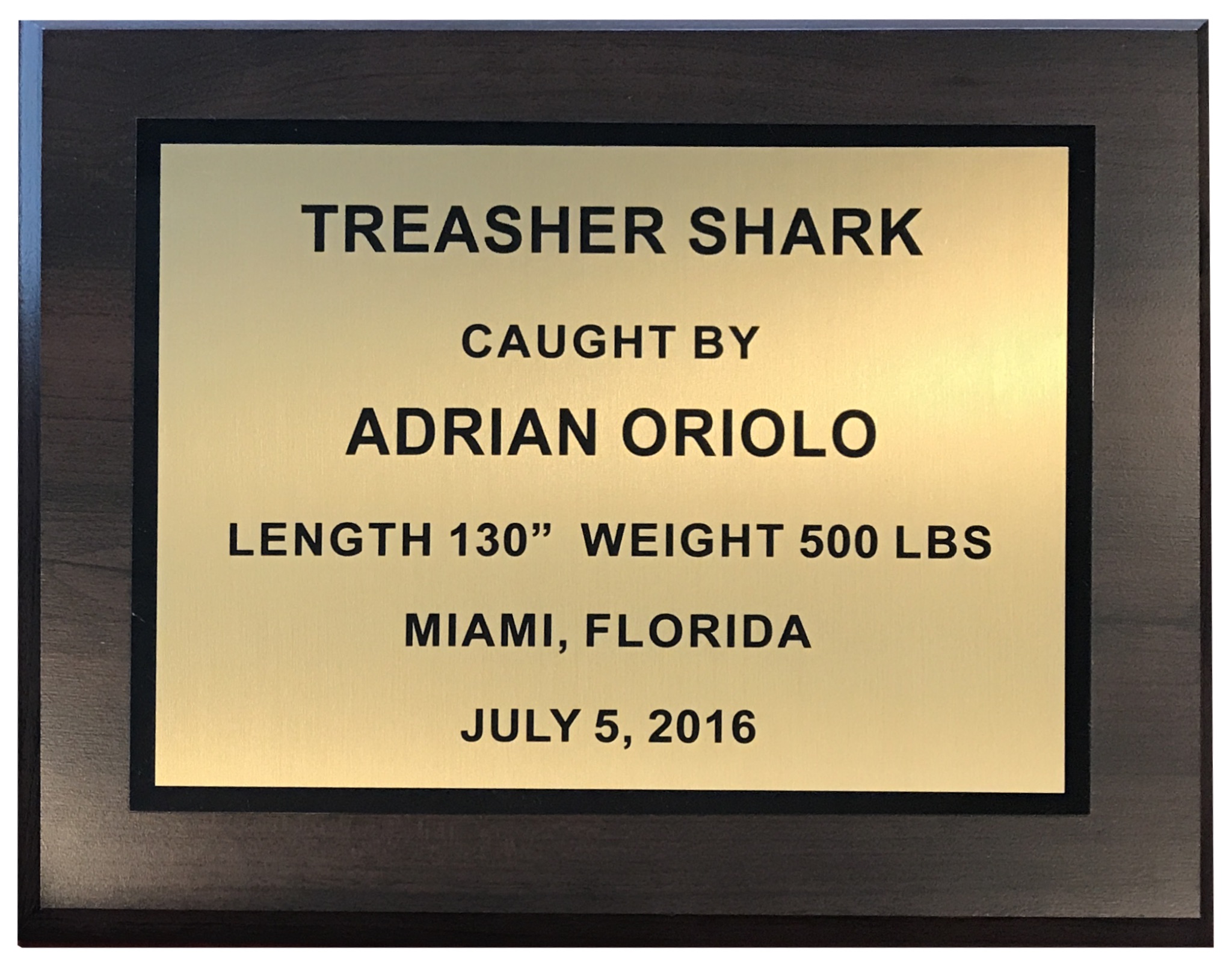
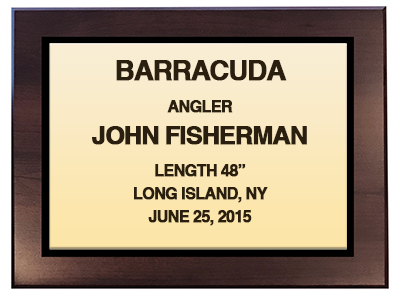 15 in x 12 in or 10 in x 8 in personalized wood plaque.
15 in x 12 in or 10 in x 8 in personalized wood plaque.
Color: Gold
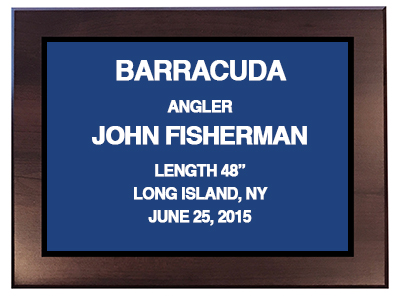 15 in x 12 in or 10 in x 8 in personalized wood plaque.
15 in x 12 in or 10 in x 8 in personalized wood plaque.
Color: Blue
Species Information
Scientific Name: Oncorhynchus tshawytscha
Average Weight: Length = 36 inches (Record: 58 inches); Weight = 30 lbs (Record: 126 lbs).
Other Names: Chinook, chins, king. quinnat, tyee, tule, blackmouth, and spring salmon.
Location & Habitat: Fresh water streams and estuaries provide important habitat for spawning chinook, and they also serve as nursery grounds for developing eggs, fry, and juveniles. In North America, Chinook salmon range from the Monterey Bay area of California to the Chukchi Sea area of Alaska. On the Asian coast, Chinook salmon occur from the Anadyr River area of Siberia southward to Hokkaido, Japan. In Alaska, they are abundant from the southeastern panhandle to the Yukon River. Major populations return to the Yukon, Kuskokwim, Nushagak, Susitna, Kenai, Copper, Alsek, Taku, and Stikine rivers. Important runs also occur in many smaller streams.
Description: Chinook salmon are the largest of the Pacific salmon, with some individuals growing to more than 100 pounds. These huge fish are rare, as most mature chinook are under 50 pounds.
The Chinook salmon is the largest of all Pacific salmon, typically measuring 36 inches in length, often exceeding 30 pounds. Adults are distinguished by the black irregular spotting on the back and dorsal fins and on both lobes of the caudal or tail fin. Chinook salmon also have a black pigment along the gum line, thus the name "blackmouth" in some areas. In the ocean, the Chinook salmon is a robust, deep-bodied fish with bluish-green coloration on the back which fades to a silvery color on the sides and white on the belly.
Colors of spawning Chinook salmon in fresh water range from red to copper to deep gray, depending on location and degree of maturation. Males typically have more red coloration than females, which are typically gray. Older adult males (4-7 years) are distinguished by their "ridgeback" condition and by their hooked nose or upper jaw. Females are distinguished by a torpedo-shaped body, robust mid-section, and blunt noses. Juveniles in fresh water (fry) are recognized by well-developed parr marks which are bisected by the lateral line. Chinook salmon heading to the ocean (smolt) have bright, silver sides, and parr marks recede to mostly above the lateral line.
Contact us for any questions. you may have.

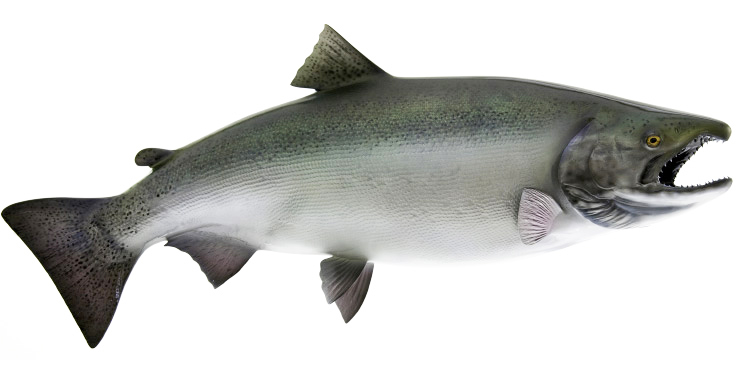
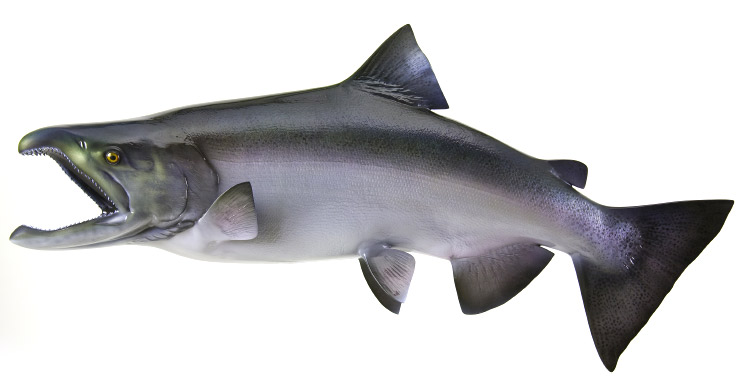
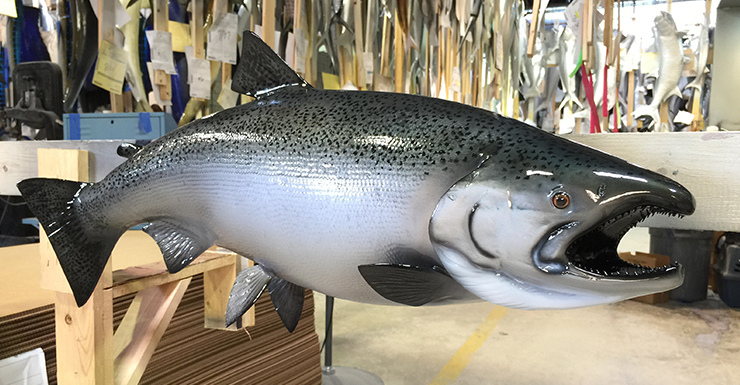
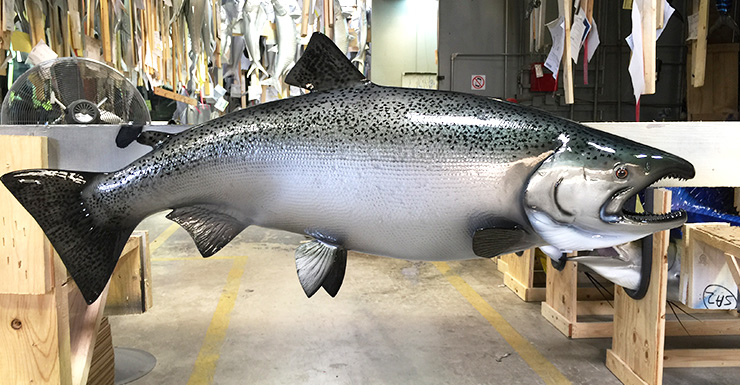
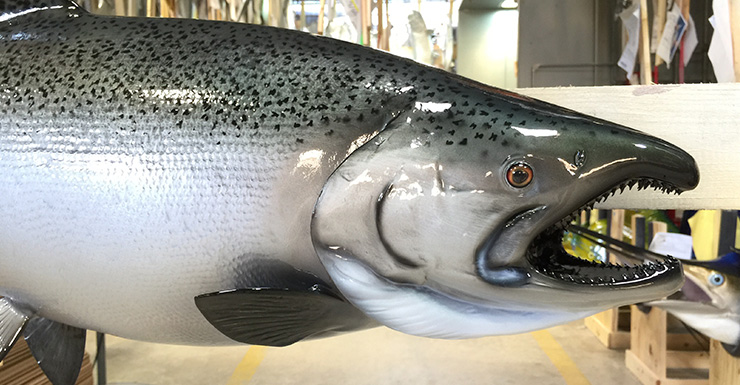
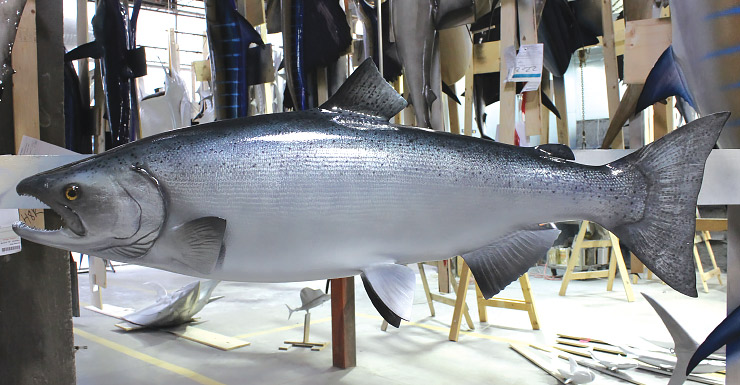

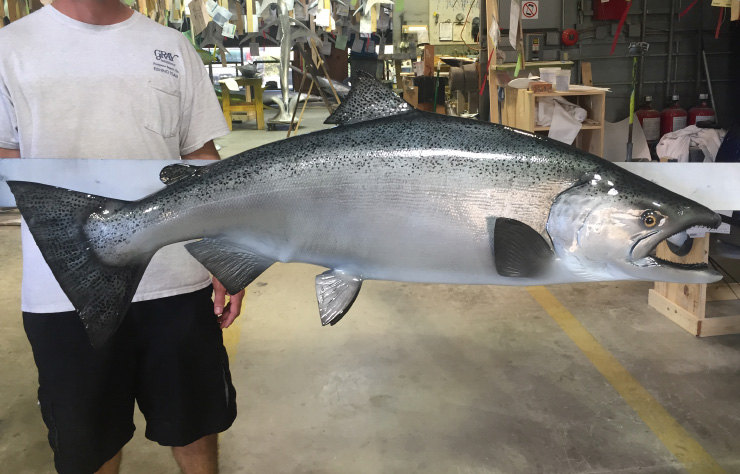



Call Now: 800.452.5501